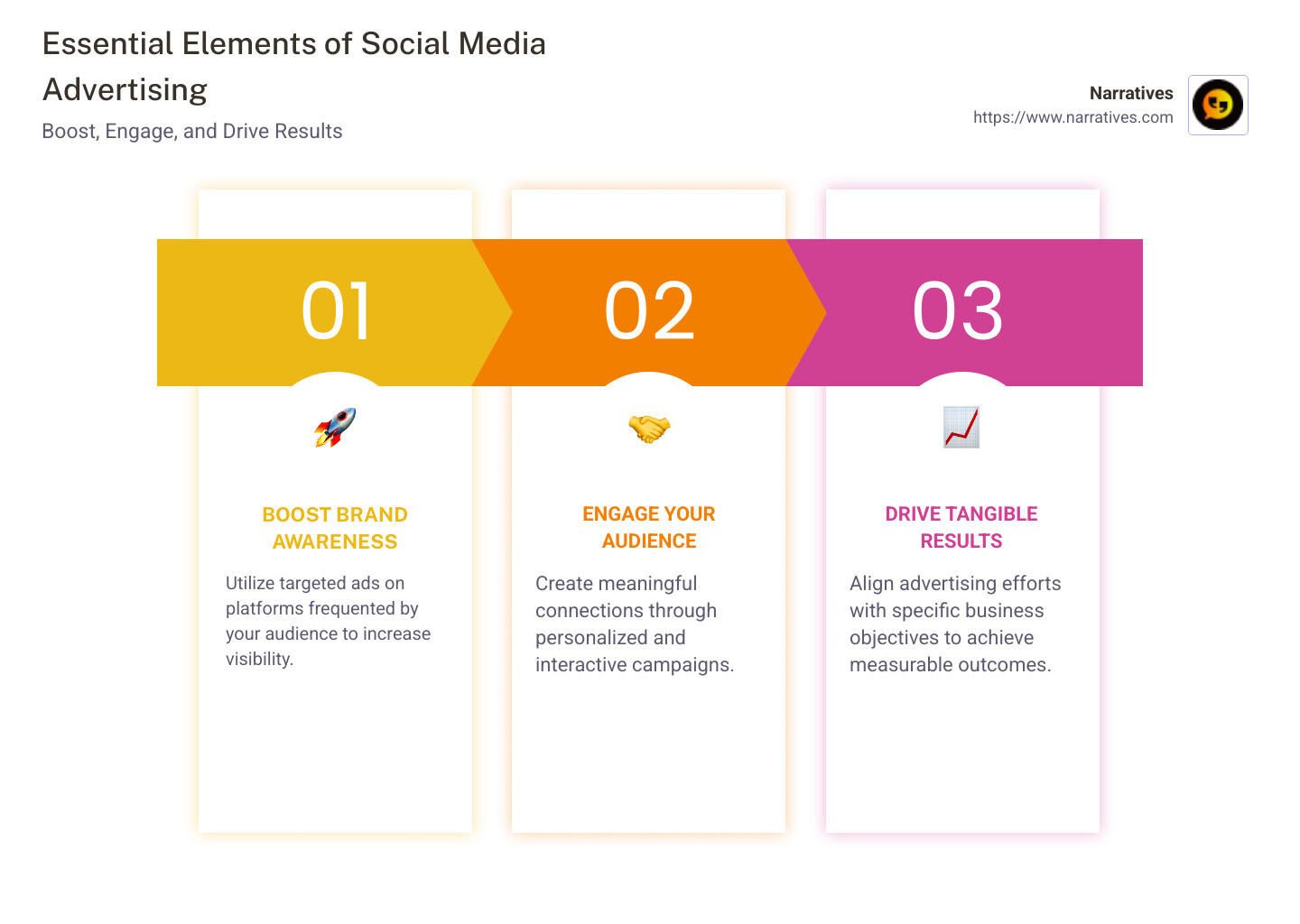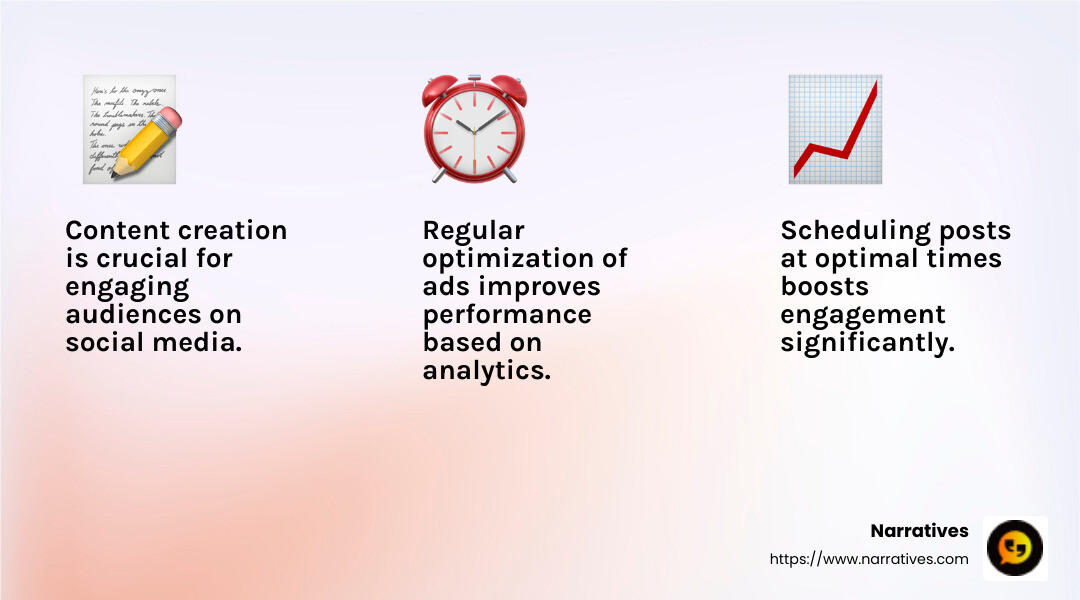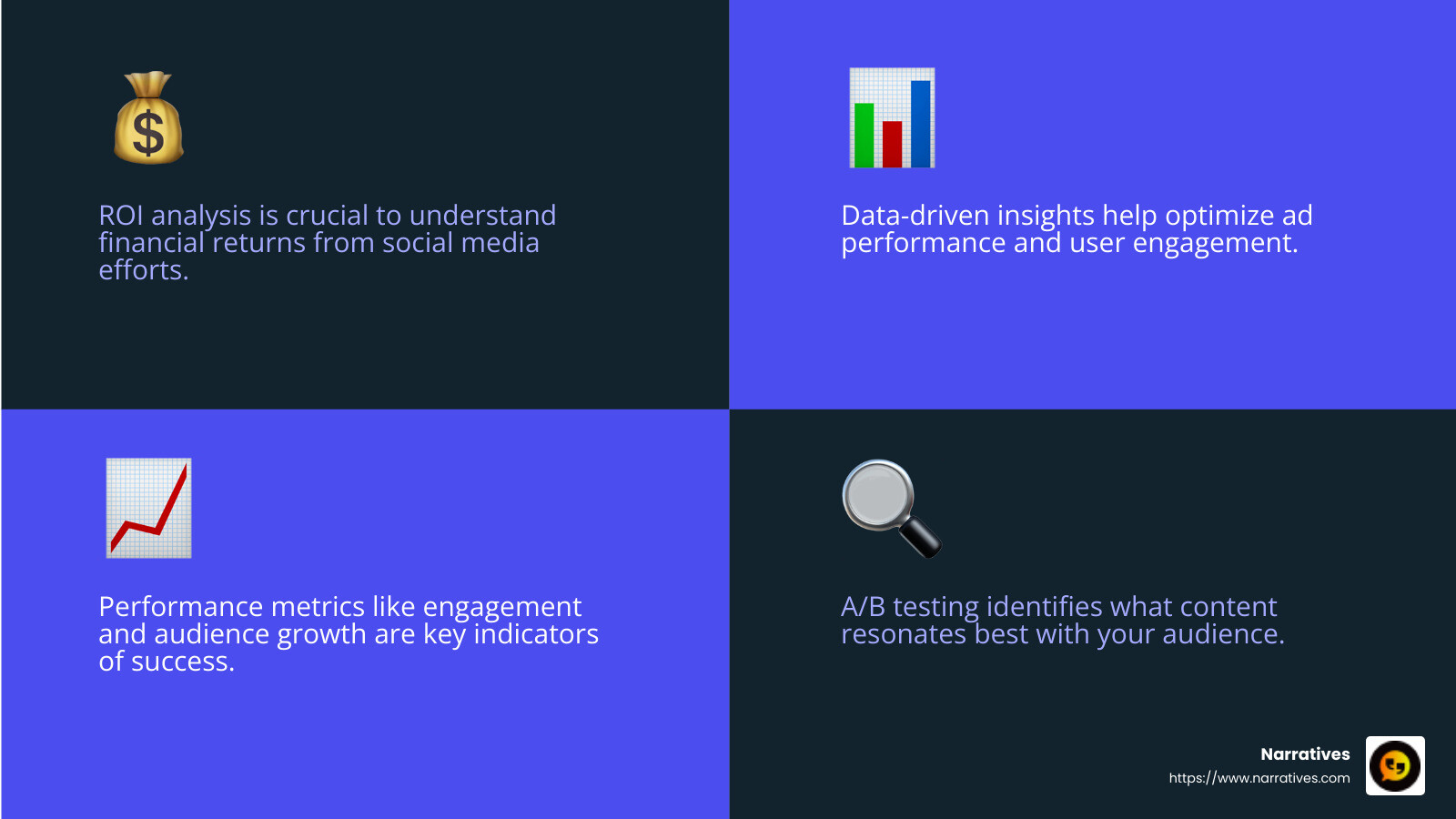Social Media Advertising Management: Tips and Tools for Success

Social media advertising management has emerged as a powerhouse in the digital marketing world. If you're keen to grasp it quickly, focus on these essentials:
- Boost Your Brand Awareness: Leverage ads on platforms where your audience spends time.
- Engage Your Audience: Use targeted campaigns to foster connection and dialogue.
- Drive Results: Align your social media efforts with tangible business goals.
In today's digital environment, social media marketing is key to enhancing brand visibility and connecting with your target audience. With 63% of consumers expressing interest in paid social advertising, it's not just about being present on platforms; it's about smartly managing your presence.
Social media marketing allows you to share your mission and engage with your audience on a personal level. The right strategy builds community around your brand, lifts your storytelling, and amplifies your advocacy efforts. In short, social media is not about pitching your business, but about expressing your values and fostering genuine interactions.
Explore the tools and strategies that can lift your brand to new heights, ensuring your message doesn’t just reach but resonates with your audience.

Understanding Social Media Advertising Management
Social media advertising management is the art of crafting, scheduling, and refining your ads to capture your audience's attention. Let's break it down into three core elements: content creation, scheduling, and optimization.
Content Creation
Creating engaging content is the heart of social media advertising. It's not just about selling a product; it's about telling a story that resonates with your audience. Think of brands like Duolingo and Patagonia. They’ve mastered the art of content that not only informs but also entertains and builds a community.
To create effective content:
- Know Your Audience: Understand what your audience cares about. Use social listening tools to gather insights and tailor your content accordingly.
- Be Authentic: Authenticity is key. Share stories that align with your brand values and connect with your audience on a personal level.
- Use Visuals: People are visual creatures. Use eye-catching images and videos to make your content stand out in crowded social feeds.
Scheduling
Timing is everything in social media advertising management. Posting your content at the right time can significantly boost engagement.
- Plan Ahead: Use a social media calendar to map out your content schedule. This helps ensure a consistent posting rhythm.
- Optimal Timing: Tools like Sprout’s ViralPost™ can help identify the best times to post based on when your audience is most active.
- Consistency is Key: Regular posting keeps your audience engaged and your brand top of mind.
Optimization
Once your content is out there, the work isn't done. Optimization ensures your social media ads perform at their best.
- Analyze and Adjust: Use analytics tools to track the performance of your ads. Look at metrics like engagement rates and conversions to see what's working.
- A/B Testing: Experiment with different versions of your ads to see which ones resonate best with your audience.
- Continuous Improvement: The digital landscape is always changing. Stay adaptable and be ready to tweak your strategy based on the latest trends and insights.

By focusing on these elements, you can manage your social media advertising effectively, ensuring your brand not only reaches your audience but also makes a lasting impact.
Essential Tools for Social Media Advertising Management
In social media advertising management, having the right tools can make all the difference. With the rapid pace of change in social media, leveraging AI tools, automation, and analytics is crucial for staying ahead.
AI Tools
Artificial Intelligence (AI) is revolutionizing how we manage social media advertising. AI tools can automate repetitive tasks, freeing up time for creative strategy.
- Content Generation: AI can suggest creative ideas based on current trends, helping you craft content that resonates with your audience.
- Sentiment Analysis: These tools analyze audience sentiment, providing insights into how people feel about your brand. This allows for more targeted and effective campaigns.

Automation
Automation streamlines your workflow, ensuring your team can focus on strategic initiatives rather than getting bogged down in manual tasks.
- Scheduling Tools: Platforms like Sprout help automate your posting schedule, ensuring content goes live at optimal times for engagement.
- Chatbots: Manage large volumes of customer interactions efficiently, providing immediate responses and improving customer satisfaction.
Analytics
Data is the backbone of effective social media advertising management. Analytics tools provide the insights needed to refine your strategy and demonstrate the value of your efforts.
- Performance Tracking: Use analytics to monitor key metrics like engagement and conversions. This data is vital for understanding what's working and where improvements are needed.
- Custom Reports: Tools like Sprout Social offer templated and customizable reports, making it easy to share insights with stakeholders and prove the impact of your campaigns.
By integrating AI tools, automation, and analytics into your strategy, you can improve your social media advertising efforts, ensuring your brand not only reaches but also resonates with your audience.
Best Practices for Effective Social Media Advertising
When it comes to social media advertising management, understanding your audience, leveraging influencer collaborations, and fostering community are key to success.
Audience Insights
Knowing your audience is the foundation of effective advertising. By understanding who your audience is, you can create content that truly resonates with them.
- Demographics and Preferences: Use analytics tools to gather data on your audience’s age, location, interests, and online behavior. This helps tailor your content to match their preferences.
- Feedback Loops: Encourage feedback through polls and surveys on social media platforms. This not only engages your audience but also provides valuable insights into what they like or dislike.
Influencer Collaborations
Collaborating with influencers can amplify your reach and credibility. Influencers have built trust with their followers, making their endorsements powerful.
- Choose the Right Influencers: Look for influencers whose values align with your brand. This ensures authenticity and effectiveness in your campaigns.
- Engagement Over Followers: Focus on influencers with high engagement rates rather than just a large follower count. Engaged audiences are more likely to interact with your brand.
Community Building
Building a community around your brand can lead to long-term loyalty and advocacy.
- Engage Regularly: Respond to comments, join conversations, and acknowledge your followers. This creates a sense of belonging and shows that you value their input.
- Create Value: Offer content that provides value, whether it’s educational, entertaining, or inspiring. This encourages followers to stay connected and engaged with your brand.
By focusing on these best practices—understanding audience insights, collaborating with influencers, and building a strong community—you can improve your social media advertising strategy and achieve meaningful engagement with your audience.
Measuring Success in Social Media Advertising
Measuring success in social media advertising management involves more than just tracking likes and shares. It’s about understanding the return on investment (ROI), analyzing data-driven insights, and focusing on key performance metrics to refine your strategies.
ROI Analysis
ROI is a critical measure of success in any advertising campaign. It helps you understand the financial return generated from your social media efforts.
- Calculate ROI: Subtract the cost of your social media campaigns from the revenue generated, then divide by the campaign cost. Multiply by 100 to get a percentage. This shows how effectively your advertising spend is driving profits.
- Track Conversion Rates: Use tracking pixels and UTM parameters to follow user actions from social media ads to your website. This helps you see how many clicks turn into actual sales or leads.
Data-Driven Insights
Data is your best friend when it comes to optimizing social media advertising.
- Use Analytics Tools: Platforms like Google Analytics and native social media analytics provide insights into user behavior and engagement. They help identify which content is performing well and which isn’t.
- A/B Testing: Test different ad creatives, headlines, and calls to action. This experimentation helps pinpoint what resonates best with your audience.
Performance Metrics
Focusing on the right metrics ensures you’re measuring what truly matters.
- Engagement Metrics: Track likes, shares, comments, and clicks. These interactions indicate how well your content is connecting with your audience.
- Audience Growth: Monitor changes in your follower count over time. A steady increase suggests successful engagement and brand interest.
- Share of Voice: Measure how much of the conversation your brand owns compared to competitors. This can be tracked through social listening tools.

By focusing on ROI analysis, leveraging data-driven insights, and tracking key performance metrics, you can ensure your social media advertising efforts are not only effective but also aligned with your business goals. This leads directly into the next section, where we will address frequently asked questions about social media advertising management.
Frequently Asked Questions about Social Media Advertising Management
What is social media advertising management?
Social media advertising management is the process of overseeing and optimizing paid ad campaigns on platforms like Facebook, Instagram, and Twitter. It involves creating engaging ad content, targeting the right audience, and analyzing performance to achieve business goals.
Key components include:
- Content Creation: Crafting compelling ads that grab attention.
- Audience Targeting: Using platform tools to reach specific demographics.
- Performance Monitoring: Tracking metrics to refine strategies.
How can AI improve social media advertising?
AI is revolutionizing social media advertising management by enhancing efficiency and effectiveness.
- Automation: AI tools can automate repetitive tasks, like scheduling posts, freeing up time for strategy.
- Personalization: AI analyzes user data to tailor ads to individual preferences, boosting engagement.
- Predictive Analytics: AI forecasts trends and user behavior, helping to optimize ad spend and content strategies.
What are the key metrics to track for success?
Tracking the right metrics is crucial for evaluating the success of your social media ads.
- ROI: Measures the financial return from your campaigns.
- Engagement Rates: Includes likes, shares, and comments, indicating audience interaction.
- Conversion Rates: Shows how many users take a desired action, like making a purchase.
- Click-Through Rate (CTR): The percentage of people who click on your ad after seeing it, reflecting its effectiveness.
By understanding these aspects, you can manage your social media advertising more effectively, ensuring your efforts are both impactful and aligned with your business objectives.
Conclusion
At Narratives, we believe in the power of digital storytelling to transform how non-profits and purpose-driven organizations connect with their audiences. Our mission is to lift underrepresented voices and share meaningful stories that inspire change.
Social media advertising management plays a crucial role in this journey. By using the right tools and strategies, we help organizations amplify their impact stories, build trust, and increase visibility. Our approach centers on crafting emotionally resonant content that not only captures attention but also drives action.
We know that non-profit partnerships are vital in today's digital landscape. Through collaboration, we create content that highlights the incredible work of these organizations, showcasing their efforts to promote social impact and community-driven change.
By focusing on storytelling, we aim to differentiate from competitors and establish ourselves as the go-to digital partner for non-profits. Our content strategy is designed to rank for storytelling-related keywords, ensuring consistent, organic traffic that supports brand awareness and inbound lead generation.
For more information on how we can support your organization's storytelling needs, visit our media network services page.
Together, let's tell stories that matter.


